By Jeffrey A. Easton
By the middle of the 4th century bc, the Roman Empire had steadily expanded its reach into the southern half of Italy. In 343, the Romans came into conflict with the Samnites, who were unable to stop the unwelcome intrusion into their homeland. When Roman armies threatened Apulia, the Greeks in southern Italy called upon the renowned mercenary general Pyrrhus, who ruled the kingdom of Epirus in northwestern Greece, for help against the intruders. Pyrrhus answered the pleas of his fellow Greeks and landed in southern Italy in early spring of that year with 20,000 infantrymen, 3,000 cavalry, 2,500 skirmishers, and 20 elephants. This force was slightly smaller than the one that had departed from Epirus, as a violent storm had blown some of Pyrrhus’s transport vessels off course during the Ionian Sea crossing. The storm seemed an ill omen for the coming campaign, but Pyrrhus entered the conflict with a celebrated military reputation and the lofty expectations of the southern Italian cities pinned on his success. Undeterred, he gathered his forces for what he anticipated would be another triumphant enterprise.
The Greek Way of War
Pyrrhus commanded a typical Hellenistic army. Heavily armored phalangists made up the core of his army. The battle tactics of the phalanx had undergone many changes in the Greek world since its inception in the 7th century bc. The most recent adaptation had come under Philip of Macedon in the middle of the 4th century bc. The typical rank of a phalanx had been eight men deep, but Philip increased the depth to 12 men. Accordingly, he equipped his infantrymen with a longer spear, which was perhaps 15 feet long. This applied additional weight to the formation, allowing it more staying power in battle. The aim of the heavier phalanx was meant not so much to overwhelm enemy infantry lines as to preoccupy them. In this way, the Macedonian infantry served as the anvil of the army.
The hammer came in the form of the heavy Macedonian cavalry, which loomed on the outskirts of a battle until an enemy began to waver. Alexander had become a master at anticipating the key moment when he could exploit disunity in the ranks of his opponents. The mixture of Greek and Macedonian infantrymen that Pyrrhus commanded served in a similar capacity. Pyrrhus’s cavalry composed a significant portion of his total force. The core of the cavalry was his agema, the 2,000 or so elite horsemen who made up his personal guard. In the same fashion as Alexander, Pyrrhus stationed himself in battle at the head of his agema. In addition to heavy infantry and cavalry, Pyrrhus’s army included lightly armed skirmishers such as archers, slingers, and javelin throwers. These auxiliary troops proved to be of particular use against the unique Roman battle formation.

Pyrrhus also had 20 war elephants at his disposal, as these exotic creatures had become a common part of Hellenistic armies following Alexander’s campaigns in the east. The deployment of elephants was an improvement on Alexander’s army, and Pyrrhus used them effectively against the Romans. The final component of his army was the mercenary units. The dissolution of Alexander’s empire had dispersed thousands of well-trained soldiers throughout the Greek world. These soldiers-for-hire became an important part of the armies of the successor kingdoms. The mercenaries practiced the most cutting-edge tactics of the day and provided a professional element to Pyrrhus’s army. Among the mercenaries who served under Pyrrhus in Italy were various Greeks, Italians, and Gallic tribesmen.
Facing a Reformed Roman Army
Pyrrhus faced a dynamic Roman army in southern Italy. The legions had undergone drastic organizational changes throughout the course of the 4th century bc, and by the time Pyrrhus came to the aid of the southern Italian cities the Romans had developed a unique military structure. Roman armies of the early Republic resembled other Mediterranean armies, using the phalanx as their primary battle formation. The phalanx served them well throughout the 5th and early-4th centuries, as they completed their conquest of northern Italy as far as the Po River with few significant setbacks. By the middle of the 4th century, the expanding Romans stumbled into conflict with the Samnites, another emerging Italian people. Their homeland, Samnium, was situated just south of Latium, the Roman homeland. The Apennine Mountains ran directly through Samnium, and its warriors had developed an unorthodox fighting style that suited the environment. When hostilities erupted, the Roman phalanxes performed terribly on the uneven terrain of Samnium. The greatest disaster came in 321 bc, when a Roman army of 40,000 was ambushed and forced to surrender to a Samnite force at the Caudine Forks.
Following this humiliation, the Roman Senate embarked on a number of reforms, including the extension of the Via Appia, a road running south into Campania that allowed for improved troop movement and communication. The most enduring military improvement came with the development of the manipular legion. The name for the formation came from its basic unit, the maniple. One maniple was composed of two centuries of varying size. In Roman armies of the late Republic, the century became the smallest tactical element of the legion and was in turn a component of the larger cohort. In the structure of the manipular legion, however, centuries were combined to form the fundamental unit of the maniple. A Roman legion deployed in three lines, with each line being composed of a strict categorization of maniples. The categories of legionaries were based on wealth and experience in battle. The first line was formed by the hastati, the youngest and most inexperienced legionaries. The principes, men in their late 20s or early 30s with considerable battle experience, formed the second line. The third line of was composed of the triarii, seasoned veterans of many campaigns.
The hastati and principes supported each other by complex maneuvers during battle, while the triarii often did not engage the enemy unless the battle was particularly difficult. The legionaries in this period were citizen soldiers, men who served willingly in the ranks of the army but still owned property around Rome that they had to cultivate. This limited the campaigning season of Roman armies but still provided the military might necessary to subdue their Italian neighbors. Only in times of crisis, such as Pyrrhus’s invasion, did the Senate call for additional recruits. The alacrity with which Roman citizens volunteered for military service during the conflict with Pyrrhus revealed a unique characteristic of the Roman psyche. They viewed war as an activity of all the Roman people and refused to submit even in the face of defeat. This was a concept that dumbfounded Pyrrhus. The core of the army had its legions, but many troops from Rome’s Italian dependents supplemented the heavy infantry as skirmishing or cavalry troops. The typical size of a manipular legion was perhaps 4,500 men. The cavalry did play a role in the armies of the Republic, but Roman horsemen were often unreliable in battle as well as on scouting missions. Despite its success in Italy, the Roman army was yet to encounter a sophisticated force such as the one Pyrrhus commanded.

A “Pyrrhic Victory” at Heraclea
Soon after Pyrrhus arrived in Tarentum, the Roman Senate sent the consul Publius Valerius Laevinus with two legions into the region of Lucania. A few of the cities in southern Italy contributed additional troops to Pyrrhus’s army as the Roman force approached. The Tarentines themselves, as Pyrrhus discovered, were not eager to fight the Romans personally. Pyrrhus imposed martial law to remedy the situation in Tarentum, prohibiting all public gatherings, impressing all men of military age into service, and creating military training programs for the local youth. The troops under Pyrrhus’s command now numbered about 30,000 men, including several thousand cavalrymen, Greek and Italian allies, and 20 elephants. He had not yet received additional troops from other southern Italian cities and preferred to wait for these additional reinforcements before facing the Romans in battle. However, the Roman army under Laevinus marched toward Pyrrhus’s position along the Siris River, near the coastal city of Heraclea, forcing him to give battle with his forces at hand.
Pyrrhus had stationed an advance cavalry force along the river, but these troops were soon overrun as the Romans crossed the river in force. Pyrrhus quickly ordered his army to assemble for battle and personally rode to the river at the head of 3,000 cavalry to slow the Roman crossing. Once the Romans reached the far side of the river, the main battle began. The Roman and Greek infantry clashed violently, with the advantage swaying back and forth. The balance of the battle was tipped decidedly toward the Greeks once and for all when Pyrrhus threw his elephants into action. This was the first time any of the Roman soldiers had faced these exotic animals, and they were terrified. The elephants particularly unnerved the Roman cavalry, and Pyrrhus unleashed his own Thessalian cavalry into the disordered Roman ranks at the key moment, driving them from the field. The casualties from Heraclea were 15,000 Romans lost and 13,000 for Pyrrhus, according to the historian Dionysius. However, the Greek historian Hieronymus placed the figures much lower, reporting 7,000 for the Romans and only 4,000 for Pyrrhus. Whatever the actual casualty count, Pyrrhus supposedly said, “Another such victory and we are lost,” adding the phrase “pyrrhic victory” to the world’s lexicon.
A Winter of Negotiations
Following his victory over Laevinus at Heraclea, Pyrrhus marched north and camped just 37 miles from the gates of Rome. Pyrrhus now wanted peace with the Romans and immunity for his allies in southern Italy, and he hoped the strength of his position would prompt the Romans to accept his terms. He sent his most trusted diplomat, Cineas, to Rome with a peace offering. Cineas quickly acquainted himself with the most influential Romans, extolling the merit of Pyrrhus’s proposal. He finally entered the Senate to formally present the terms. Cineas’s rhetoric seemed to sway a number of the senators, before the elderly Appius Claudius entered the chamber. Appius promptly chastised his fellow Romans for even considering submitting to Pyrrhus after only one defeat and thus surrendering lands that had been conquered by their ancestors. Accordingly, the Senate rejected the peace proposal and maintained that they would not negotiate with Pyrrhus while his army remained on Italian soil.
Laevinus faced harsh criticism from his fellow Romans for the defeat at Heraclea, but he was not removed from his position as consul. Instead, the Senate quickly raised new troops to bolster his legions. Cineas observed the many new recruits before departing from Rome, and commented that the Roman people were like a hydra—when one head was cut off many more grew in its place. In addition to outfitting new troops, the Romans also renewed an alliance treaty with Carthage, since Pyrrhus now posed a threat to Carthaginian control of Sicily as well.
Being denied a settlement with Rome, and without the resources and equipment to even consider laying siege to the city itself, Pyrrhus resigned himself to plundering the region of Apulia. His army ravaged the region of Bruttium as well. At this time, many Samnites, Lucanians, Bruttians, and other groups in southern Italy joined Pyrrhus’s cause. Despite his personal bitterness at their hesitation in joining his ranks earlier, Pyrrhus accepted the much-needed additions. During the winter of 280-279 bc, he entertained a Roman delegation that wanted to free the prisoners taken at Heraclea. Negotiations soon failed, as did Pyrrhus’s attempt to bribe a prominent Roman emissary. However, Pyrrhus paroled his Roman prisoners shortly thereafter so that they could attend a festival in Rome. He hoped they would pressure the Senate to make peace with him, but Rome again refused to negotiate and the prisoners were sent back to Pyrrhus’s camp. Pyrrhus divided his replenished army and wintered in Apulia and Campania.

Assembling at Asculum
In the spring of 279, the two sides once again began to maneuver in southern Italy. The stage was set for a second engagement between Pyrrhus and a resurgent Roman army, this time led by both consuls. At Asculum, in northwestern Apulia, Pyrrhus camped with his army, which numbered around 40,000 infantry, 8,000 cavalry, and 19 elephants. Only a quarter of his troops were Greeks who had originally journeyed to Italy with him. The rest were contributed by the citizens of southern Italy to Pyrrhus’s cause.
The Roman army that marched into Apulia was led by the newly elected consuls Caius Fabricius and Quintus Aemilius, and consisted of four legions and at least as many allied contingents—about 40,000 foot soldiers and 8,000 cavalry. The large Roman force surprised Pyrrhus, indicating that his intelligence network in southern Italy was either flawed or nonexistent. Typically, it was the Romans who performed poorly in scouting operations, but in this campaign they succeeded in engaging Pyrrhus on equal numerical footing, and on terrain of their choosing. The ground around Asculum was poorly suited for Pyrrhus’s army, but in the face of the approaching Roman force he had to give battle. The field was heavily wooded and a small tributary (possibly a branch of the modern Carapelle River) flowed nearby. The environment was too confining for Pyrrhus’s phalanx infantry to operate effectively, and the uneven terrain inhibited the numerous Greek cavalry units and elephants.
Pyrrhus arranged his forces in line, with his weaker troops—the Bruttian, Lucanian, and Tarentine allies—at the center. On the flanks he placed the Samnite phalanx on the left and the powerful Macedonian phalanx on the right. Cavalry units protected both wings of the army, and reserve skirmishing troops and elephants were held back behind the lines along a slight incline. Pyrrhus positioned himself with the 2,000 members of his agema behind the infantry line so that he could quickly ride to any spot on the field. Meanwhile, the Romans deployed the I, II, III, and IV Legions in three lines at spaced intervals in a checkerboard pattern. The Italian allies were intermingled throughout the formation or held in reserve. The consuls placed javelin men and other skirmishers in front of the Roman lines, along with 300 wagons. The wagons were an ingenious innovation meant to deal with Pyrrhus’s elephants. They were four-wheeled vehicles outfitted with spikes, tridents, grappling hooks, and other iron implements, and some even contained fire throwers manned by archers. Their design was meant to frighten and slow the progress of the elephant charge that had confused the legions at Heraclea.
Holding Ground, Losing Camp
Asculum began as a typical battle, with cavalry units skirmishing before the infantry lines clashed. The Roman cavalry crossed the river and engaged the Greeks, allowing the legions time to cross and deploy. The Roman horsemen charged the Greek lines and Pyrrhus’s cavalry countercharged, the Greek horsemen attempting to maneuver around their foes, while the Romans opted for a head-on charge. When the Greeks pressed the Roman horsemen hard, the latter retired behind their infantry lines. Once the two infantries engaged, the battle began in earnest. The two sides clashed for some time, with neither gaining an advantage. The first major development came when the Macedonian phalanx routed the I Legion and drove it from the field. About the same time, the II Legion overrran some of the Greek troops near Pyrrhus’s center. At this point Pyrrhus unleashed his elephants against the advancing Roman infantry, hoping to deliver a knockout blow and decide the outcome instantly.

Despite the confined space, uneven ground, and unexpected Roman wagons, Pyrrhus’s elephants drove the Romans back. The Romans manning the wagons fled their vehicles and fell in behind the legions, disrupting the infantry lines in the process. The Roman and Greek infantry engaged on and off for several hours. Each confrontation probably lasted no longer than 10 to 15 minutes, since anything longer would have been too exhausting for the heavily armed soldiers. When the infantry lines of the two armies engaged again in the late afternoon, the Bruttian and Lucanian section of Pyrrhus’s line was finally routed and fled from the field. The Tarentines standing next to them in line, all carrying distinctive white shields, also withdrew from the action upon seeing their comrades flee. Pyrrhus quickly plugged the gap by sending a timely cavalry countercharge to the vacant spot in his line.
By early evening, the situation had worsened for Pyrrhus. An army of 4,500 Daunians allied with Rome happened upon the raging battle. They had been sent into Apulia to aid the consuls and had the great good fortune to approach the conflict from the rear. The Daunians could not discern which side was which in the melee occurring two miles in front of them, so they proceeded to attack Pyrrhus’s camp instead. Pyrrhus had left few soldiers to guard his camp, and he probably had no idea that a Daunian relief force was even in the area. He quickly realized the danger, however, and sent cavalry and elephants to reinforce his rear. The Greek phalanxes had been fighting well and holding the line during the crisis, but Pyrrhus left them vulnerable to Roman flank attacks when he sent the cavalry and elephant reinforcements back to his camp.
In any event, Pyrrhus was too late to save his camp—the Daunians had overpowered the Greek guards and set the camp aflame. The cavalry and elephant handlers marching to the rear saw that the camp was lost and turned to attack the III and IV Legions, which had routed their opponents and advanced well beyond the original Roman line of battle. The legionaries saw the approaching onslaught of Greek horsemen and elephants and retreated into some woods at the top of a hill. Pyrrhus’s men could not get at the Romans, who threw the last of their javelins and fired arrows into the Greek troops from the heights. To make matters worse, Pyrrhus’s flank was seriously threatened at this point, and he pulled infantrymen from the main battle line and sent them against the Romans at his rear. The consuls countered by sending additional cavalry to further exploit the Roman gains on the flank.
The battlefield quickly shifted from its original ground to the area in Pyrrhus’s rear. Pyrrhus moved back most of his remaining heavy infantry, and the Romans countered with additional cavalry and infantry. The battle intensified around Pyrrhus’s camp, with both sides feeling a renewed fervor at the prospect of driving their enemy from the field. The struggle finally subsided as darkness crept onto the field, and the two sides separated. The Romans crossed back over the river to their camp, and Pyrrhus’s army spent the night under the stars, as the Greek camp had been destroyed.
A Second Chance at Victory
With the loss of most of his food and supplies, Pyrrhus and his men were in dire straits. His wounded troops could not receive medical attention, and many died during the night. Among the dead were a number of Pyrrhus’s finest troops and officers. Pyrrhus himself had suffered a wound in the arm from a Roman javelin—his wound total rivaled that of Alexander, underscoring his lead-from-the-front mentality. Meanwhile, the Romans rested in camp, having also taken significant casualties.

Rather than retreat or allow the Romans to retain the momentum, Pyrrhus repositioned his battered army on an open plain. This must have been a grueling procedure in the dark, and its success was a testament to the discipline of Pyrrhus’s troops. When day broke, the astonished Romans found themselves in a vulnerable position and had to either retreat or face Pyrrhus on ground of his choosing. The consuls chose the latter and lined up to face the Greeks on the open plain. Most Roman commanders during the Republic were eager and often overly aggressive in seeking battle. Their brief time in office, only 12 months, required them to actively pursue victory before their terms were up, as military glory could be cultivated into political power in Rome. Throughout the 3rd century bc, this mind-set often became a hindrance to Roman success, as generals willingly gave battle under unfavorable circumstances simply because the enemy was near.
Pyrrhus’s new position at Asculum compelled the consuls to give battle. The engagement started in a similar fashion to the day before. The two cavalries rode out first and skirmished with each other, while the opposing infantry lines summoned their courage for battle. The infantry clash favored Pyrrhus’s men. The Roman legions, unable to dislodge the Greeks, began to falter. This was the opportunity Pyrrhus had been waiting for, and he unleashed a thunderous elephant charge. The elephants put the wavering Roman infantrymen to flight, and the real slaughter began. Pyrrhus’s pursuing cavalry cut down many Romans as they fled the field. Hieronymus, taking his figures from Pyrrhus’s own account of the battle, claims the Romans lost 6,000 men and Pyrrhus 3,505.
An Interlude in Sicily
Pyrrhus had inflicted heavy casualties on the Romans in his second Italian victory, but he had also suffered severe losses. The remaining Roman forces headed north, while Pyrrhus withdrew south into allied territory. Both armies needed time to recuperate, and neither displayed any desire to engage again during the campaigning season of 279 BC. During the stalemate, Pyrrhus received a summons from a number of cities on Sicily, most notably Syracuse, to help them resist Carthaginian expansion on the island. Feeling that his position in southern Italy was secure from an immediate Roman threat, he crossed over to Sicily. The Tarentines and other southern Italian allies were disillusioned at Pyrrhus’s abandonment of the campaign against Rome, but he left behind his trusted officer Milo and a garrison force at Tarentum.
Once in Sicily, Pyrrhus enjoyed great initial success in the Carthaginian-controlled territory, conquering every city except one major port. At Lilybaeum on the western coast of the island, a well-supplied Carthaginian force held off his siege of the city and subsequently pushed him out of western Sicily. When stalemate set in on his campaign, Pyrrhus alienated his Sicilian hosts, much as he had alienated the Tarentines. After two years on the island, he received word that the Romans had begun punishing the southern Italian cities that previously had allied with him, laying siege to Tarentum. This news, combined with the growing resentment of the Sicilian Greeks, provided Pyrrhus all the motivation he needed to leave Sicily in 276 bc.
When he returned to Italy, he found the regions formerly under his control in shambles. Much to his dismay, Pyrrhus found almost no new native units to bolster his ranks. The peoples of southern Italy had grown increasingly dissatisfied with his leadership and abandoned the cause. The loss of the Samnites hit Pyrrhus particularly hard, as they had previously been his most steadfast allies. Pyrrhus also had lost a number of troops during the return voyage to Italy. A Carthaginian fleet had harassed his crossing of the Strait of Messina, and a mercenary force allied to Rome had opposed his landing. Pyrrhus returned from Sicily with only 20,000 infantry and 3,000 cavalry. He desperately needed a victory to regain the confidence of his soldiers and his Italian allies.

Defeat at Beneventum
In the spring of 275 bc, the Senate dispatched the two Roman consuls to southern Italy to once again face Pyrrhus. One Roman army marched into Lucania and another, under the consul Manius Curius Dentatus, into Samnium. Pyrrhus sent a portion of his forces into Lucania and marched the bulk of his army into Samnium. He located Curius’s army near the Samnite city of Beneventum and set an ambush of the Roman camp. However, during the night many of the Greek torches burned out and the soldiers became lost in the woods, causing the ambush to unravel. At daybreak, Roman sentries became aware of the lead elements of Pyrrhus’s army, and Curius sent out his cavalry to occupy the Greeks while the legions could form for battle.
When the main engagement began, Curius’s legions routed a number of Greek units. He had learned a valuable lesson from the first day at Asculum and had camped near a wooded area. In this confined space, the Greeks’ well-practiced phalanx tactics became ineffective. In turn, Pyrrhus unleashed an elephant charge that tore through the Roman lines and threatened their camp. Curius rallied the Romans and commanded a valiant defense. At this point, Pyrrhus’s secret weapon was turned on him. The Romans loosed many javelins and arrows at the charging elephants, causing them to change direction. In the confusion of the two converging masses and the confined space around the Roman camp, the elephants rampaged into Pyrrhus’s own units. Exploiting the chaos, Curius’s legions surged forward and drove the Greeks from the field.
With his defeat at Beneventum, Pyrrhus lost a significant part of his army as well as the confidence of his allies. Having alienated most of the cities in southern Italy, he had no viable source for new recruits or supplies. In contrast, the Romans had a seemingly inexhaustible pool of manpower from which to draw new troops. Under the circumstances, Pyrrhus abandoned his campaigns in the western Mediterranean and sailed back to Greece. During the next three years he continued to pursue military glory, until he was killed in a street fight in the Greek city of Argos in 272 bc.
Rome: From Obscurity to Fame
Pyrrhus’s defeat stunned the Greek world, as little was known of Roman civilization prior to his intervention in Italy. The unexpected Roman success inspired Greek historians such as Hieronymous and Timaeus to collect information on Rome’s history and culture. In addition, Pyrrhus’s invasion and initial success motivated the Romans to ensure that no future enemy would set foot on Italian soil. This led them into conflict with the Carthaginians, their former allies against Pyrrhus, only a decade later. Pyrrhus’s place in military history is often tainted by the heavy cost of his victories, a legacy to which he gave his name, but his accomplishments rival those of any general during the period from the breakup of Alexander’s empire until the late 3rd century bc. During his short military career, he ruled a vast kingdom in Greece under the constant threat of invasion. Just as impressive, Pyrrhus held in check two emerging powers in the western Mediterranean. His abilities as a battlefield tactician were never more apparent than at Asculum, where he executed a daring nighttime move that wrested control of the battle from the Romans and achieved a remarkable—if short-lived—triumph. In every way, it had been a true “Pyrrhic victory.”
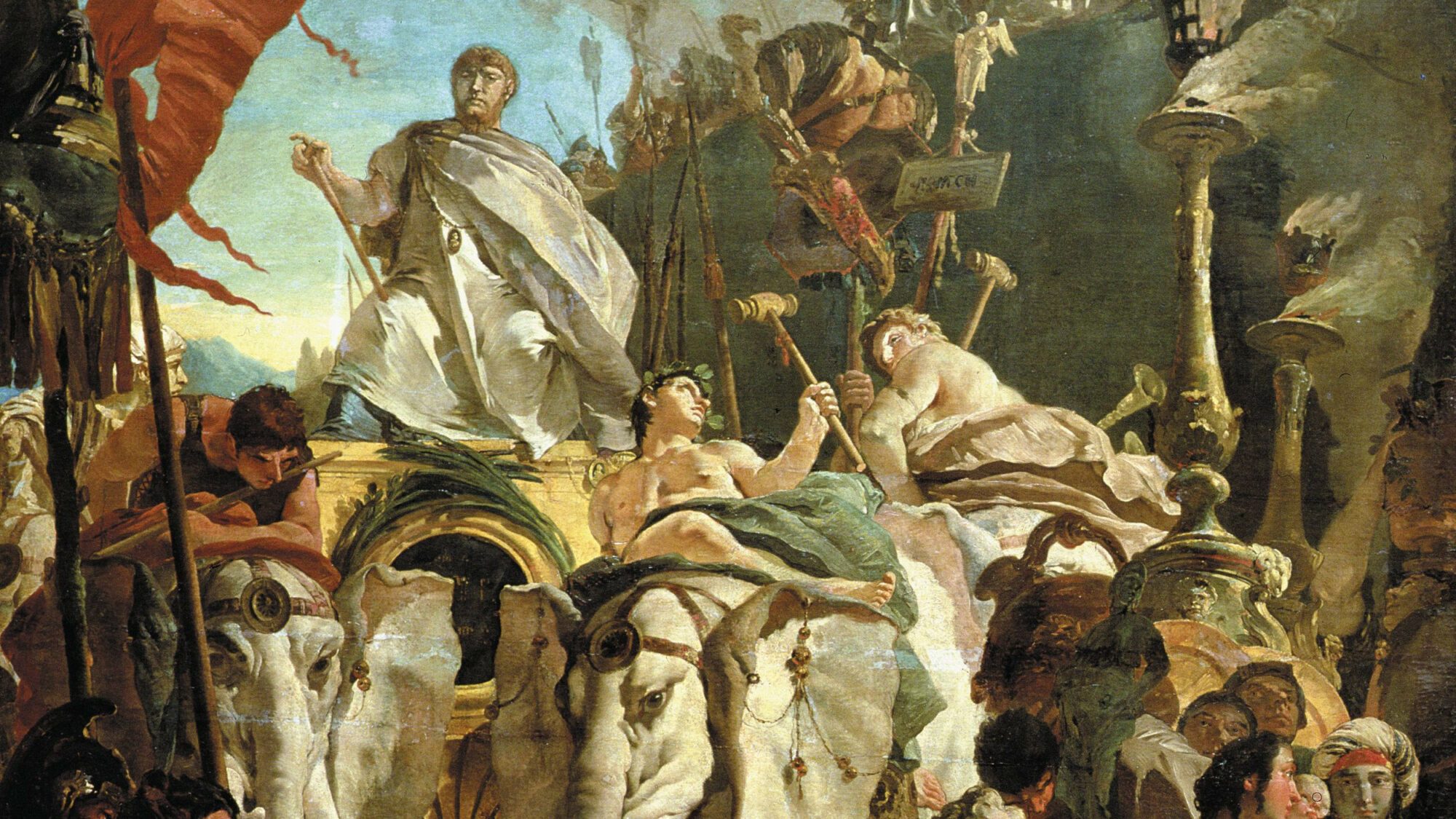
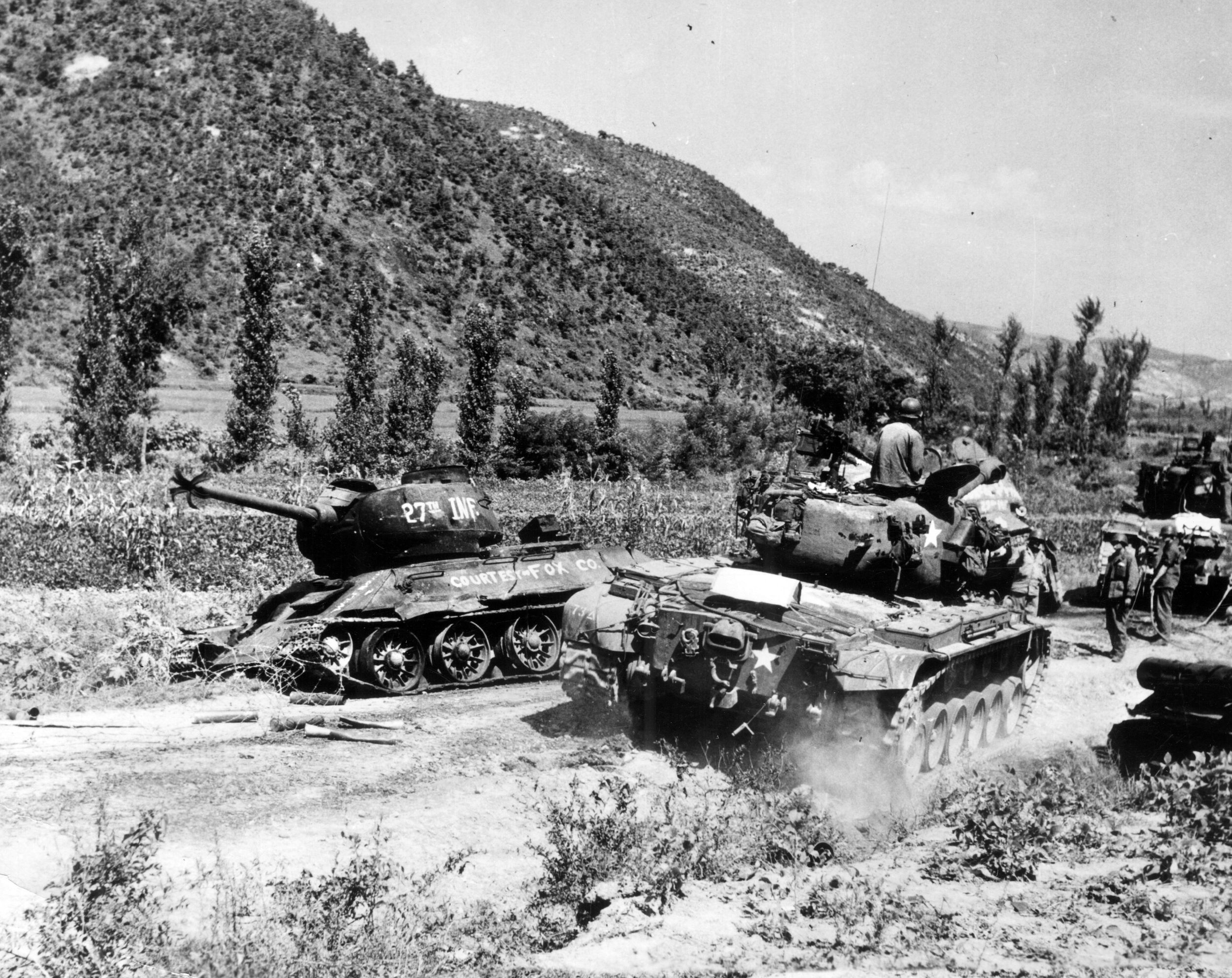
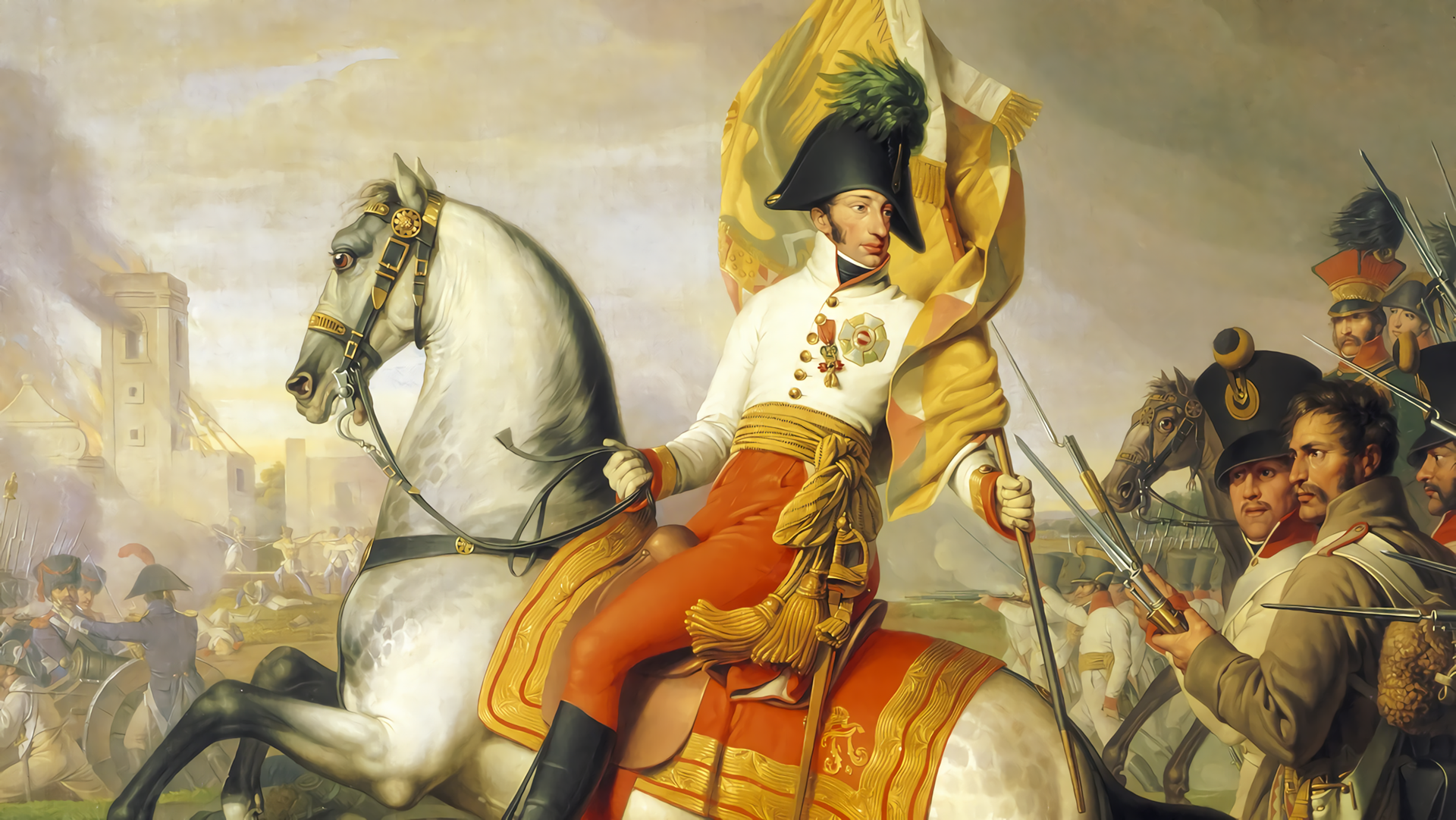

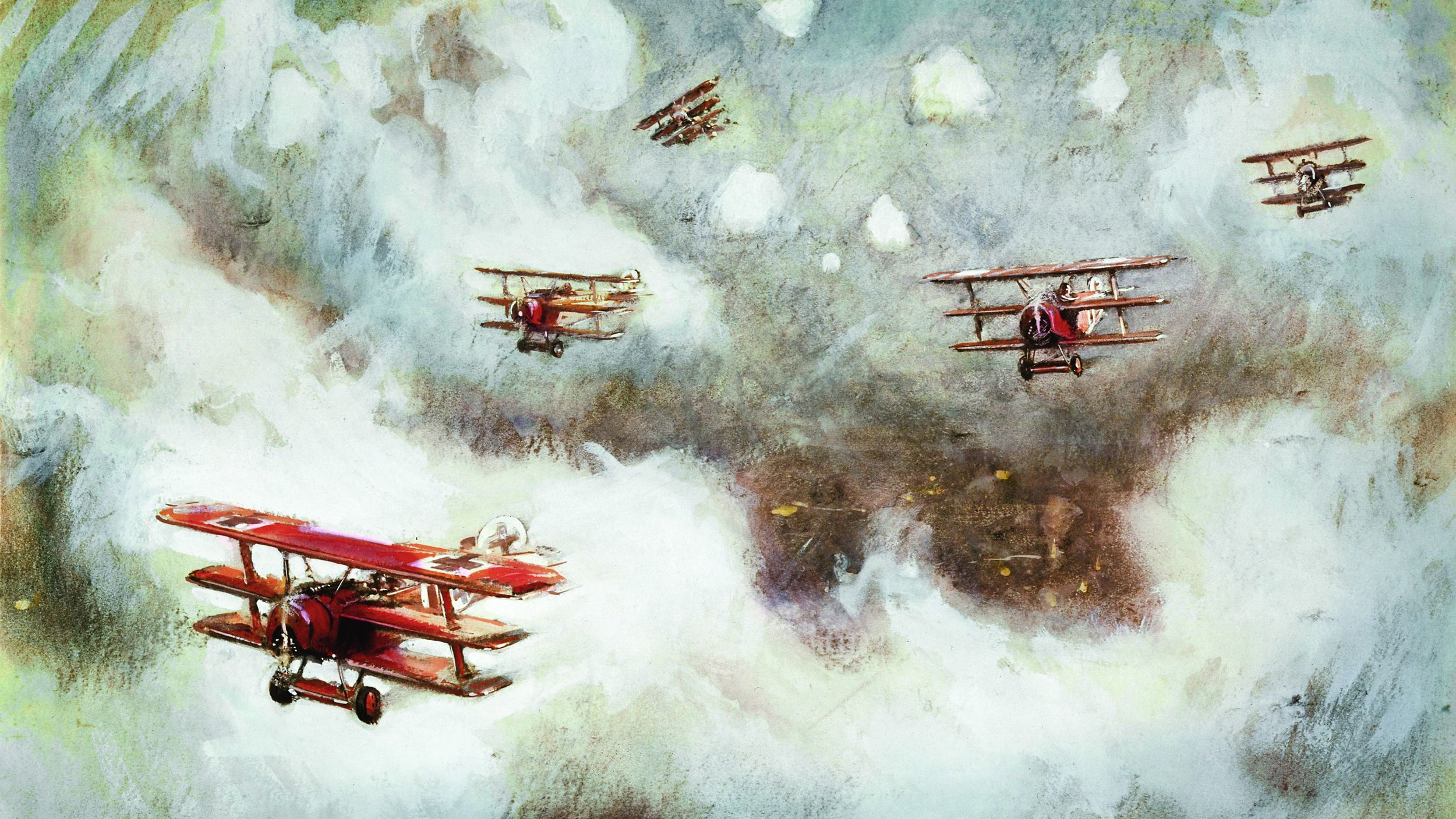
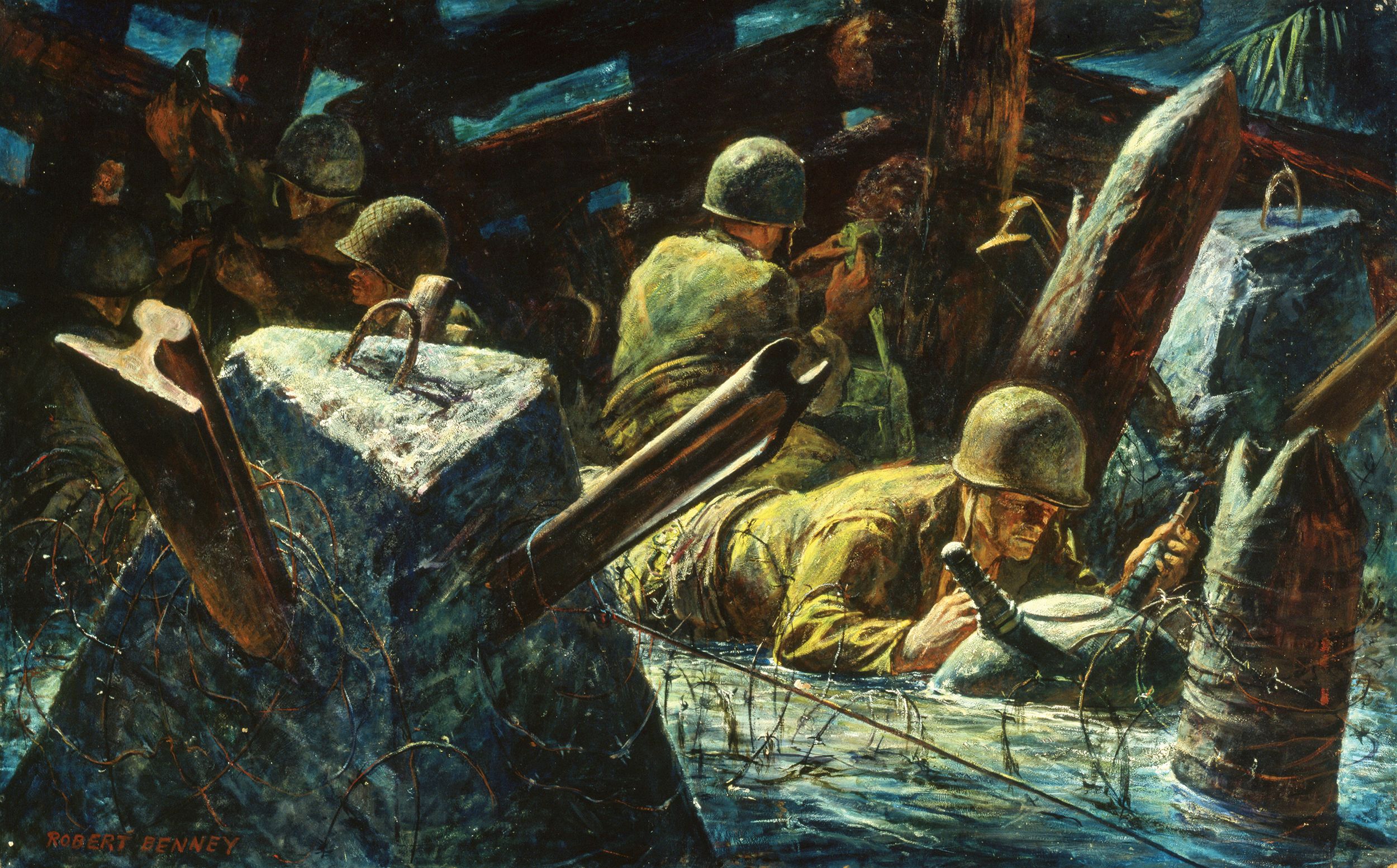
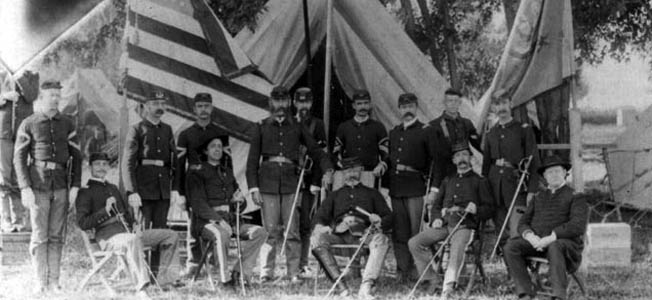
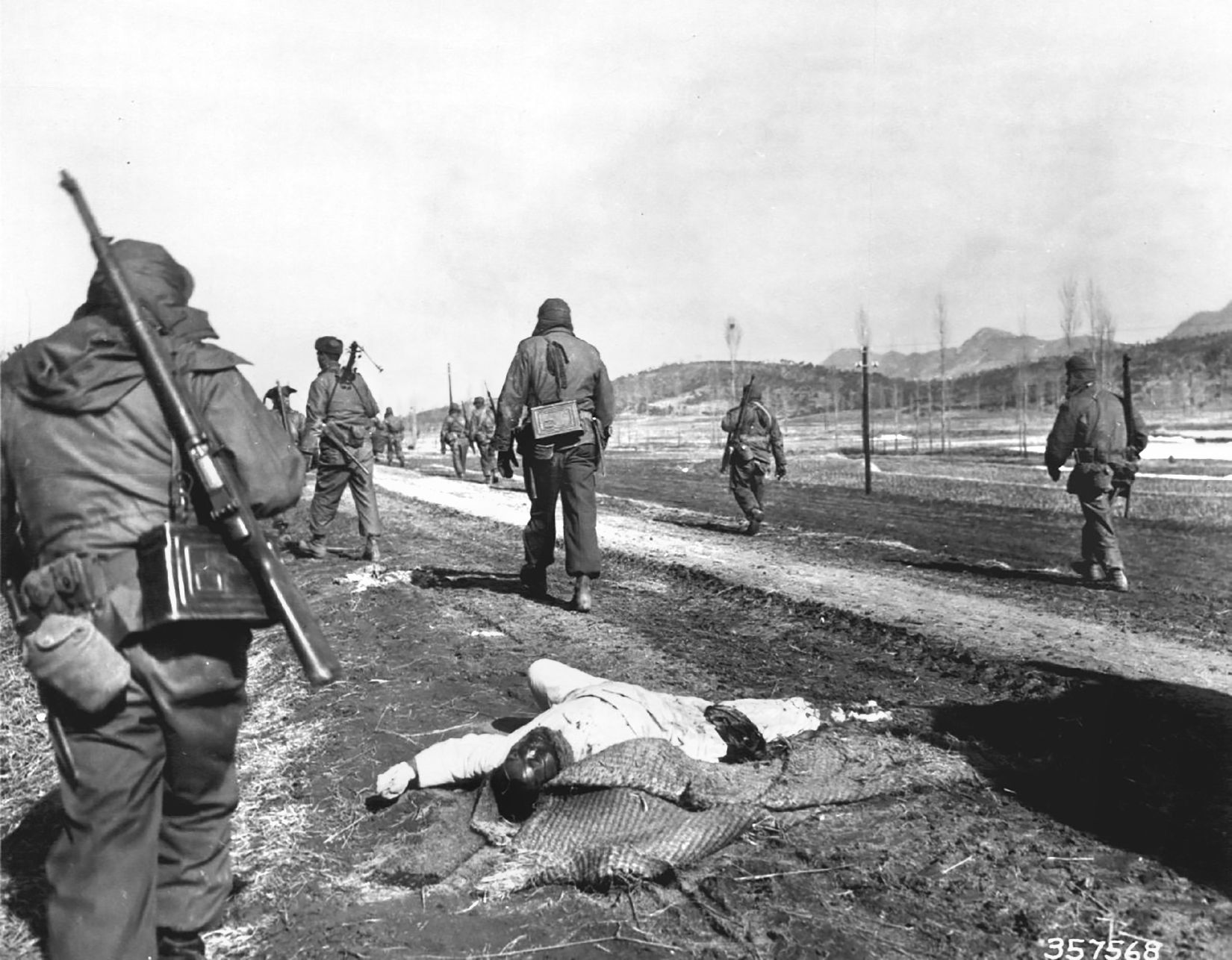
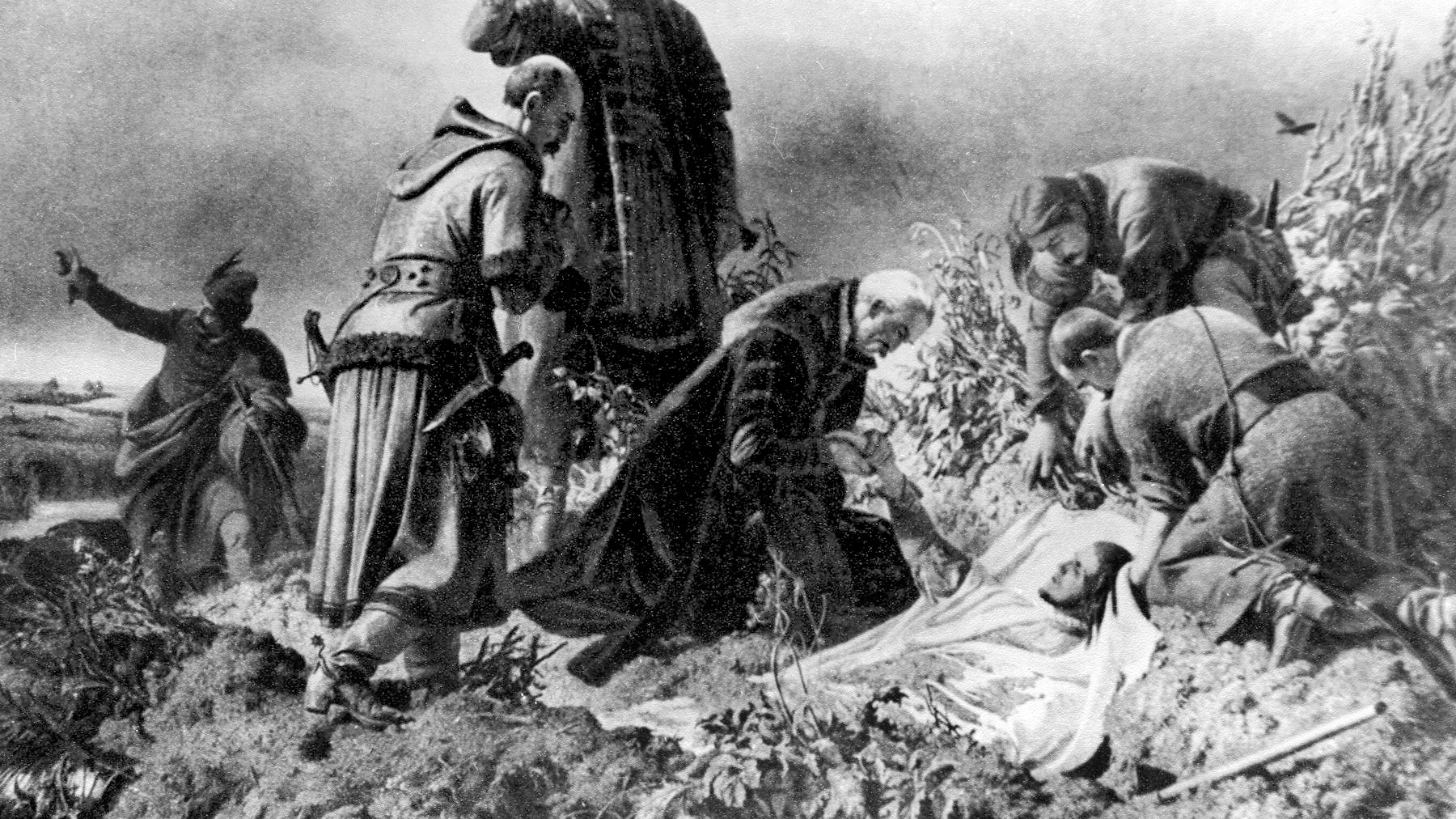
Join The Conversation
Comments
View All Comments